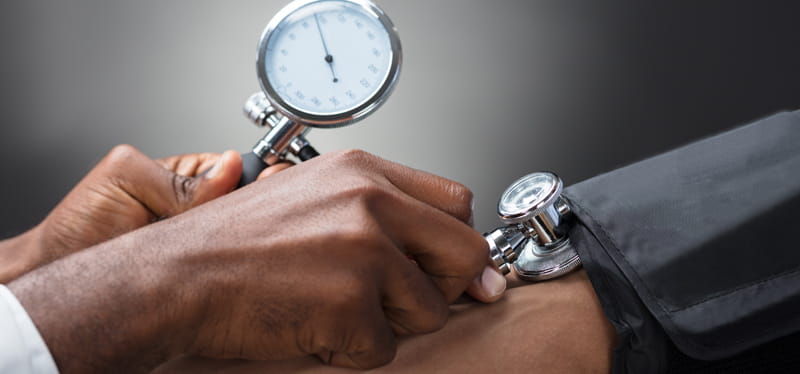Study: 3 in 4 black adults have high blood pressure by their mid-50s
By American Heart Association News

Black adults are substantially more likely than white adults to develop high blood pressure by age 55, found a study that followed nearly 4,000 people for 30 years. High blood pressure is a leading cause of heart disease and stroke, and the findings may provide insights as to why black Americans have higher death rates from cardiovascular diseases than their white peers.
S. Justin Thomas, the lead author of the study and a clinical psychologist at the University of Alabama at Birmingham, said the findings point to the need to begin talking about high blood pressure as early as grade school.
“I think even an intervention when you’re going into school systems teaching kids about the importance of diet and exercise and maintaining a healthy weight are all things that need to be done at a really young age,” said Thomas. “We can’t wait until people are 40 or 50 to start talking about hypertension.”
The study, published Wednesday in the Journal of the American Heart Association(link opens in new window), looked at health data for 3,890 adults without high blood pressure in the Coronary Artery Risk Development in Young Adults, a large-scale study of coronary artery disease that began enrolling black and white adults between ages 18 and 30 in 1985. By the time they turned 55, about 75 percent of black men and women had developed high blood pressure, compared to 55 percent of white men and 40 percent of white women.
The findings suggest doctors should pay close attention to blood pressure levels among their younger black patients, Thomas said.
This is one of only a few studies to track blood pressure levels for black and white women and men from young adulthood through middle age. Previous studies suggest black children have higher blood pressure levels than white children.
High blood pressure is a condition in which the force of the blood flowing through the vessels is higher than what is considered healthy. According to guidelines from the American College of Cardiology and American Heart Association, people have high blood pressure if the top number of their reading is 130 or over or the bottom number is 80 or over.
For the study, Thomas and his colleagues analyzed 30 years of health information collected on the participants, including blood pressure levels, weight, dietary and exercise habits, and family history of high blood pressure. The AHA partially funded the study.
Longtime epidemiologist Dr. Lisa A. Cooper, who was not involved with the study, said the “most dramatic and concerning” finding is that even among black and white adults who enter adulthood with similar low blood pressure levels, black adults are more likely to develop high blood pressure.
Cooper, a practicing general internist at Johns Hopkins Medicine in Baltimore, said it’s important for researchers to better understand societal factors that contribute to racial disparities. In this latest study, she said it would have been helpful to examine the relationship between high blood pressure and the participants’ employment status, living arrangements, exposure to discrimination, access to medical care and other social factors that can contribute to an increased risk of heart disease and stroke.
Even so, she said, the findings back up current heart health recommendations.
“This [study] provides more support for what we actually know to be the right thing to do to manage blood pressure and what we’ve been trying to encourage people to do: [eat] more fruits and vegetables, maintain a healthy weight, stay physically active,” said Cooper. “Now we have even another good reason that it’s important to recommend these things, especially to young adults.”
Research investigating racial disparities in high blood pressure goes back at least two decades. Some of the studies have looked at the relationship between blood pressure and systemic problems, such as discrimination and health care access. Others have looked at individual factors, such as sleeping habits, diet and exercise.
Overall, high blood pressure rates in adults 20 and older have been increasing over the past 30 years. Recent data from the Centers for Disease Control and Prevention shows 43 percent of black adults and 29 percent of white adults have high blood pressure. CDC statistics also show the prevalence gap between white and black adults has remained steady for the past three decades.
Cooper said the study results send a clear message that young black adults — even those who are healthy — need to be vigilant about eating healthy, exercising and getting regular checkups to keep high blood pressure, heart disease and stroke at bay: “It’s never too early to start.”
If you have questions or comments about this story, please email editor@heart.org.




